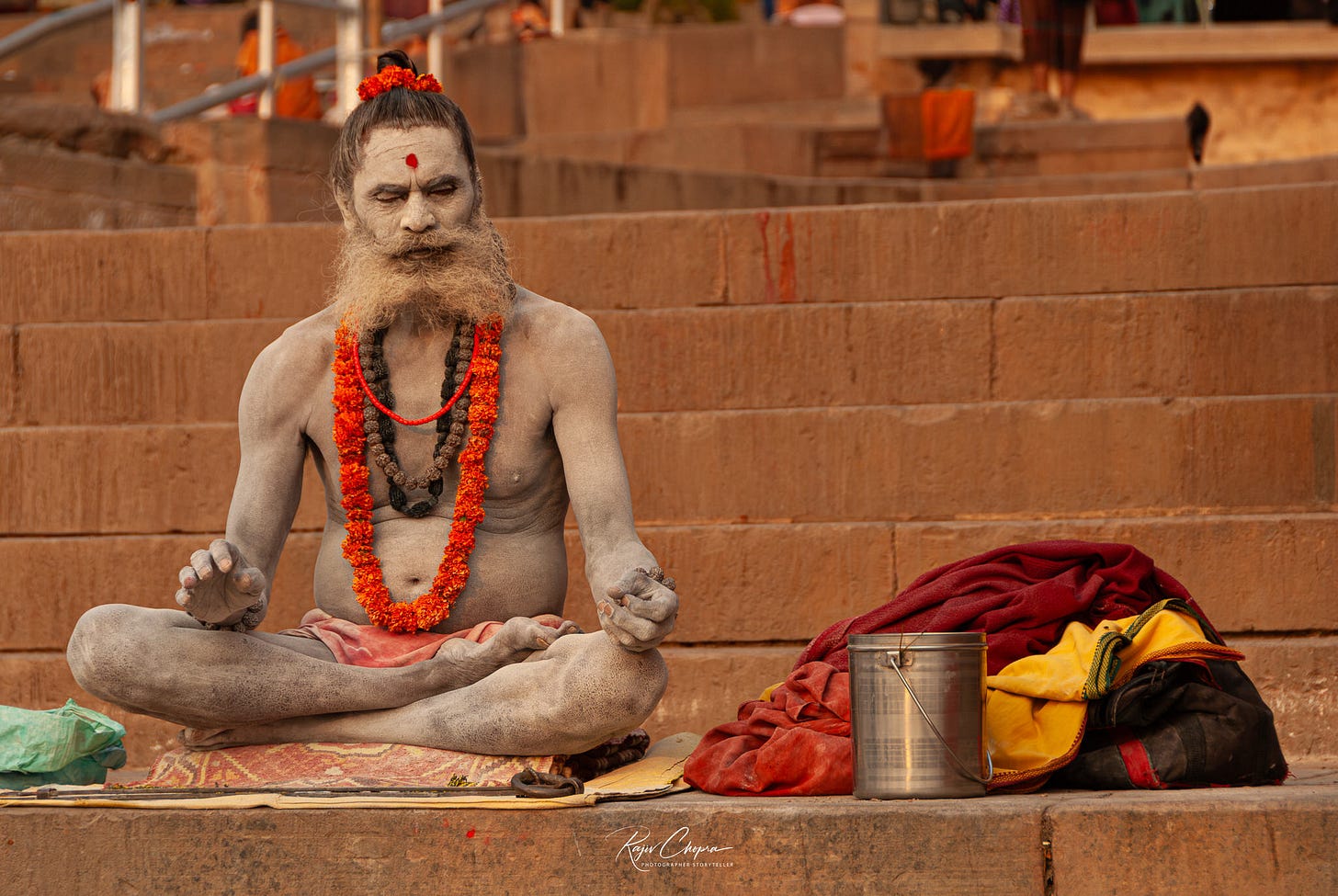Experience the unique beauty of the Varanasi ghats at dawn
Full of life. Full of People
The mood of the Kashi ghats changes with the day.
The mood of Kashi’s ghats, like all places, shifts with the passing hours. I’ve never been fond of the sunset at the ghats because the buildings are in the shade, appearing dull. As twilight yields to night, peace settles upon the river and the riverside steps.
Morning follows night; sail traditional boats…




